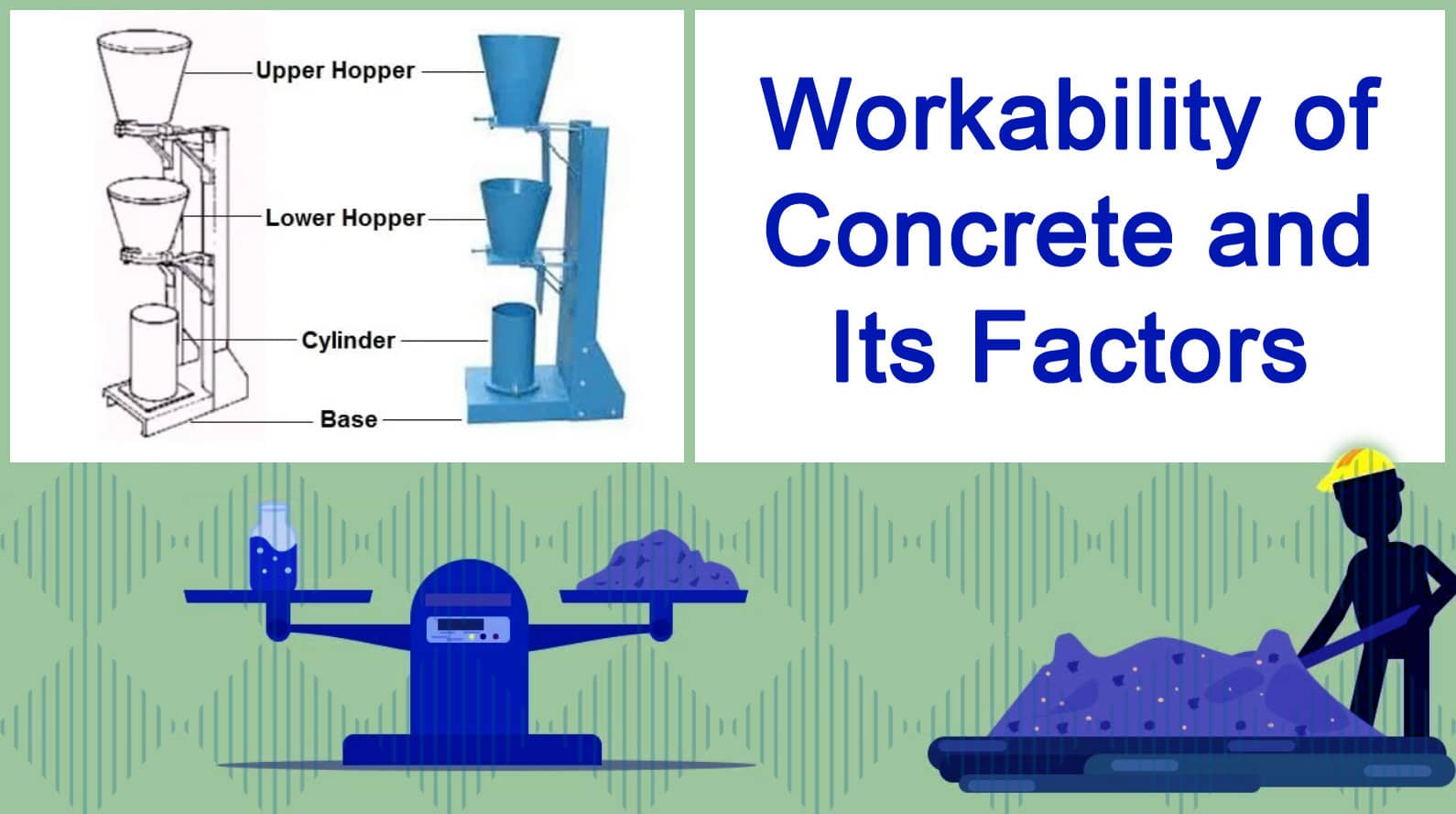Workability of Concrete and Its Factors

What is Workability of Concrete ?
Workability are often defined because the property of fresh concrete which describes the convenience and homogeneity of the concrete to be mixed, fully compacted and finished.
The following requirements possess for A Workability of Concrete
- The concrete should be compacted with minimum efforts.
- The concrete shouldn't form bleeding and segregation.
Workability of concrete mainly depends on the combination proportion and therefore the properties of concreting materials (water, cement, aggregates). The shape, size, and grades of aggregates also play an excellent role within the variation of workability. For better workability fine and coarse aggregates should be graded. it's been found that concrete made from round grain sand is more workable than the concrete of crushed sand. If air entraining admixture is employed within the mix, it'll also increase the workability and reduce segregation and bleeding.
Factors Affecting Workability Of Concrete
The factors affecting workability are as following
- Amount Of Water within the Mix
- Proportion Of Coarse And Fine Aggregates: Workability are often increased by decreasing the quantity of coarse aggregates within the mix. Fine aggregates produce more wore workable concrete.
- Shape Of aggregates: Round shaped aggregates give better workability than angular shaped aggregates.
- By expanding the cement content within the mix.
- By including admixtures within the mix.
- Slump Test.
- Compaction Factor Test.
- Vee-Bee Test.
Apparently, the need of workability differs as per the character of the work and blockage within the full stream of concrete thanks to the spacing and nature of the reinforcement. The workability of concrete is usually measured by one among the subsequent three tests.
